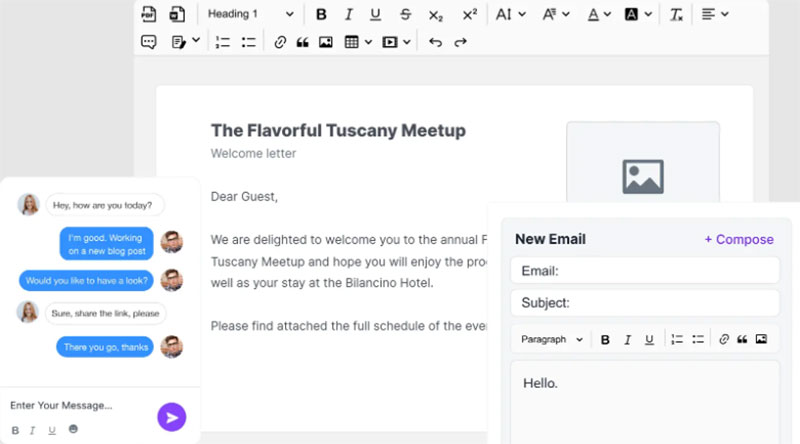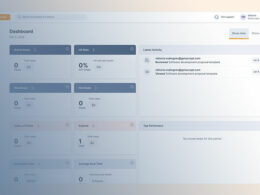Seven Strategies for Effective Collaboration Within Distributed Teams

With the rise of remote work and more companies opening their doors to global talent, distributed teams have become the new norm.
However, while the benefits of distributed teams are numerous, effective collaboration can be challenging when team members are spread across different locations, time zones, and cultures.
To help your distributed team thrive, here are seven strategies for effective collaboration:
1. Leverage Technology
One of the most significant advantages of the digital age is the array of collaboration tools available. Make the most of these resources to facilitate communication and collaboration within your distributed team.
Tools like project management software can help bridge the physical gap by providing a virtual workspace for team members that promotes asynchronous collaboration, where people can contribute at different times, as working hours can vary for distributed team members.
On the other hand, tools like team chat apps and video conferencing platforms help facilitate real-time collaboration for distributed teams working during the same hours.
Ensure everyone is well-versed in these tools and establish guidelines for their use to keep everyone on the same page.
2. Set Clear Expectations and Goals
Clarity is more essential than ever when working with distributed teams. Clearly define roles, responsibilities, and expectations for each team member. Establish specific goals and milestones, and ensure everyone understands their contribution to achieving them.
This not only helps in aligning team members’ efforts but also provides a sense of purpose and direction, which can be challenging to maintain when working remotely.
3. Foster a Culture of Trust
Trust is the foundation of successful collaboration within distributed teams. But building trust can be more challenging when you can’t meet face-to-face regularly.
To combat this issue, encourage open communication and transparency among team members via whatever virtual communication channels you use. Aim to create an environment where team members feel safe sharing their ideas, concerns, and challenges.
Trust is a two-way street, so lead by example and show that you trust your team members to deliver on their commitments.
4. Communicate Regularly
It goes without saying that without communication, there can be no collaboration. So, make sure to schedule regular team meetings, one-on-one check-ins, and project updates to ensure everyone is informed and engaged.
Different time zones can make scheduling a bit tricky, so rotate meeting times to accommodate everyone’s schedules when possible. Use video calls whenever you can to foster a more personal connection among team members.
Additionally, create group chat channels around different projects or topics to discuss things as they come up.
5. Emphasize Cultural Sensitivity and Inclusivity
Distributed teams often consist of members from diverse cultural backgrounds, and it’s crucial to embrace this diversity and encourage cross-cultural understanding and sensitivity to promote collaboration.
Be aware of cultural differences in communication styles, work preferences, and time management. Promote inclusivity by ensuring that all team members have equal opportunities to participate and contribute.
Lastly, consider celebrating different cultural holidays and events within the team to build a sense of belonging and expose team members to each other’s unique cultures.
6. Document Everything
When you can’t walk over to a colleague’s desk or whiteboard, documentation becomes even more critical. Create a centralized repository for project-related documents, meeting notes, training materials, and other important information.
Tools like Google Drive, Dropbox, or SharePoint can help keep everything organized and accessible.
Documenting decisions, action items, and discussions ensures that team members can reference them when needed and stay on the same page, even across vast distances.
7. Maintain Flexibility and Work-Life Balance
Distributed teams often blur the boundaries between work and personal life, as many people are working from their homes and dealing with children, pets, or other responsibilities during working hours.
Encourage your team members to maintain a healthy work-life balance by setting clear working hours and respecting them while allowing plenty of flexibility to take breaks and handle personal responsibilities.
Make sure to monitor workloads and ensure that no one is burning out due to a lack of boundaries. Incorporating SharePoint, guided by a seasoned SharePoint consultant, significantly boosts collaboration in distributed teams.
The platform excels in streamlining document management and real-time communication, essential for remote work. A SharePoint consultant ensures tailored setup and optimal feature use, overcoming geographical barriers in teamwork. Thus, SharePoint, with expert consultancy, becomes an essential tool for successful distributed collaboration.
Final Words
Effective collaboration within distributed teams requires a combination of technology, clear and frequent communication, trust-building, cultural sensitivity, documentation, and a focus on work-life balance.
By implementing these seven strategies, you can promote a highly collaborative environment that allows your distributed team to thrive, achieve its goals, and deliver exceptional results.
Remember that building and maintaining strong relationships within your team is just as crucial as meeting project milestones and will ultimately contribute to higher productivity and success.
- Dart in Development: What is Dart Used For? - May 8, 2024
- The Rise of Account Planning Software in B2B - May 7, 2024
- Professional Networking: Essential Apps Like LinkedIn - May 7, 2024








